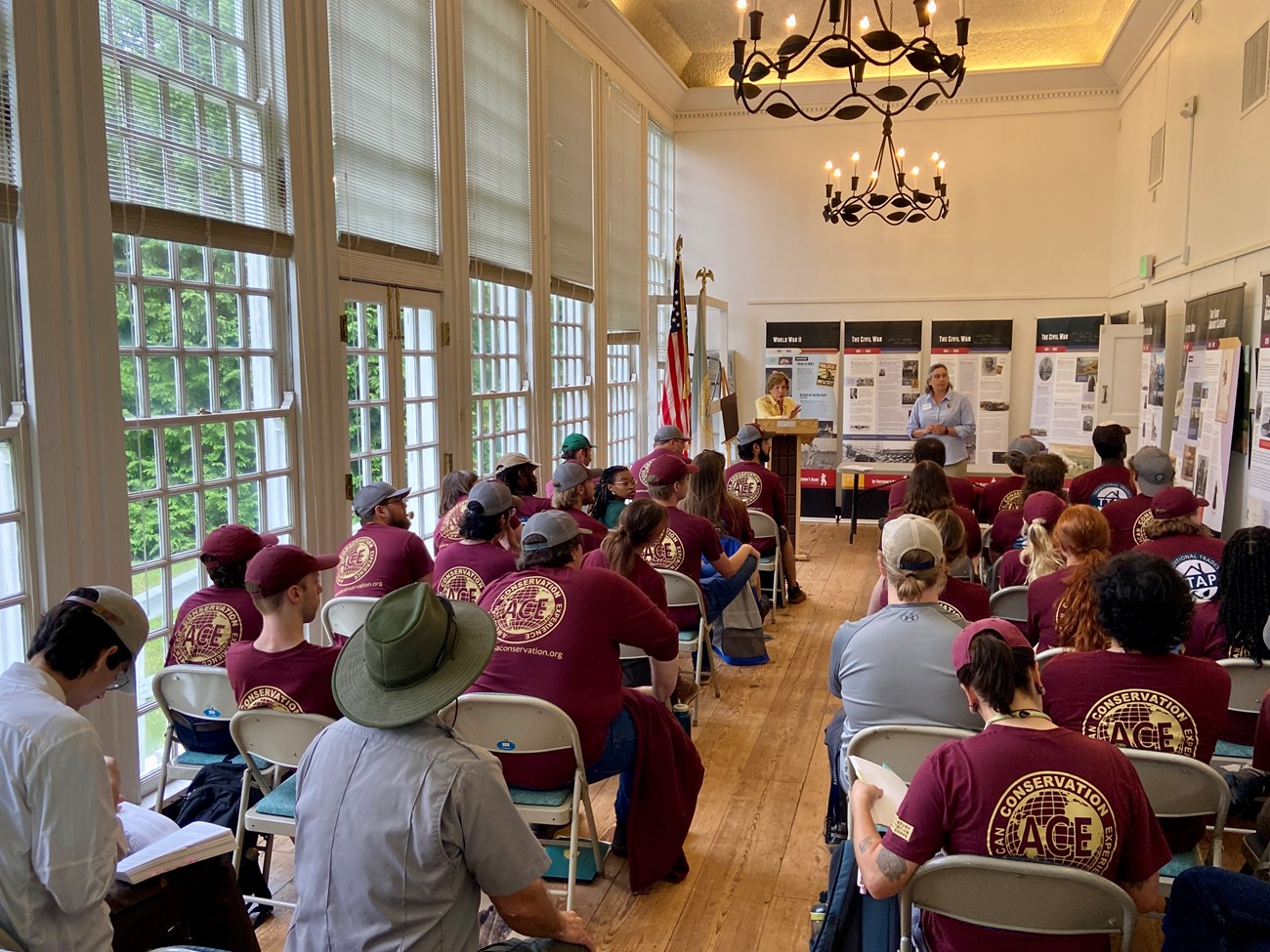Last updated: December 9, 2024
Article
Training the Next Generation of Cultural Landscape Stewards

NPS
The Traditional Trades Advancement Program-Landscape Stewardship Corps (TTAP-LSC) gives aspiring young conservationists the chance to help care for the cultural landscapes that reveal our nation’s diverse stories.
The Landscape Stewardship Corps is made up of youth between the ages of 18-30 (or up to 35 for veterans). Intended as an introduction to the trade, little to no experience in horticulture, historic preservation, or landscape maintenance is required, and a focus on equity emphasizes including participants from backgrounds underrepresented in the horticulture and historic preservation trades.
Working in Parks
Participants work in host parks across the country, from the historic orchards of Yosemite National Park in California, to the National Cemetery at Andersonville National Historic Site in Georgia, to the Medgar and Myrlie Evers Home in Mississippi. The interns learn hands-on skills like pruning, turf care, and horticulture through their work experience.

NPS
James Hogan, Horticulturist and TTAP-LSC mentor at Fort McHenry National Monument and Historic Shrine and Hampton National Historic Site in Maryland says, “Being able to teach and mentor two LSC participants through the TTAP program has been a wonderful experience. I enjoy teaching and sharing my knowledge with them. However, the greater joy is watching them develop and grow as people and leaders of the next generation.”
Training and Development
In addition to learning from their park mentors and through cultural landscape tasks and projects, interns also participate in program-wide training. One such training took place during the summer of 2024 in Baltimore. TTAP-LSC interns met to attend the three-day workshop on landscape preservation to build their skills in tree identification, planting, pruning, nursery operations, soil composition, site assessment, equipment operation, tool maintenance, and more. In addition, during an enthusiastic career building session, interns networked with NPS staff, the Department of Interior representatives, and green industry professionals.

NPS
Interns also receive professional development stipends to attend training or an event of their choosing. And the TTAP program provides guidance on federal resume writing, navigating USA jobs, and using the Public Land Corps hiring authority. All interns who complete the TTAP-LSC program successfully will earn the ability to apply for federal jobs using either Public Lands Corps hiring authority or Direct Hire Authority, supporting their transition into permanent NPS employment.

NPS
Making Connections
The TTAP-LSC program is designed to impart the technical and analytical skills necessary to assess, plan, and carry out cultural landscape preservation.
Hope Dailey, a TTAP-LSC intern, says, “One of the most valuable insights I've gained is looking at places through the lens of historical landscapes. Understanding how we can aid in the storytelling by using skills like pruning, planting, and weed management has given my work more substance. I've also been challenged in new ways, like running projects and gaining independence as a worker.”
Caring for cultural landscapes requires careful attention to detail and knowledge of specific methods and techniques. Through the Landscape Stewardship Corps, a new workforce of skilled professionals will be equipped to steward our nation’s culturally significant places into the future.

NPS
About the Landscape Stewardship Corps
This exciting opportunity to learn the skills of landscape preservation maintenance is a program of the National Park Service and nonprofit partner, American Conservation Experience. Managed by the Historic Preservation Training Center and the Olmsted Center for Landscape Preservation, the program is funded through the Inflation Reduction Act as part of the American Climate Corps.- Duration:
- 2 minutes, 47 seconds
Youth and military veterans are invited to join the Landscape Stewardship Corps of the National Park Service. Learn skills, work in amazing places, and preserve our country's historic landscapes.
